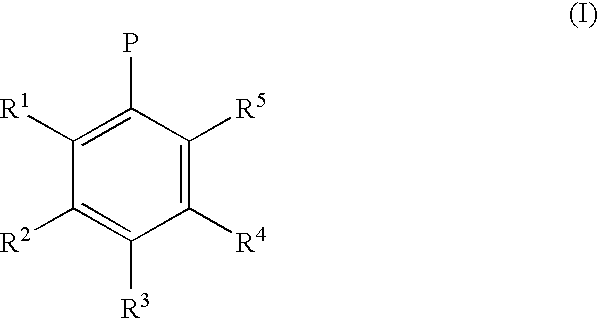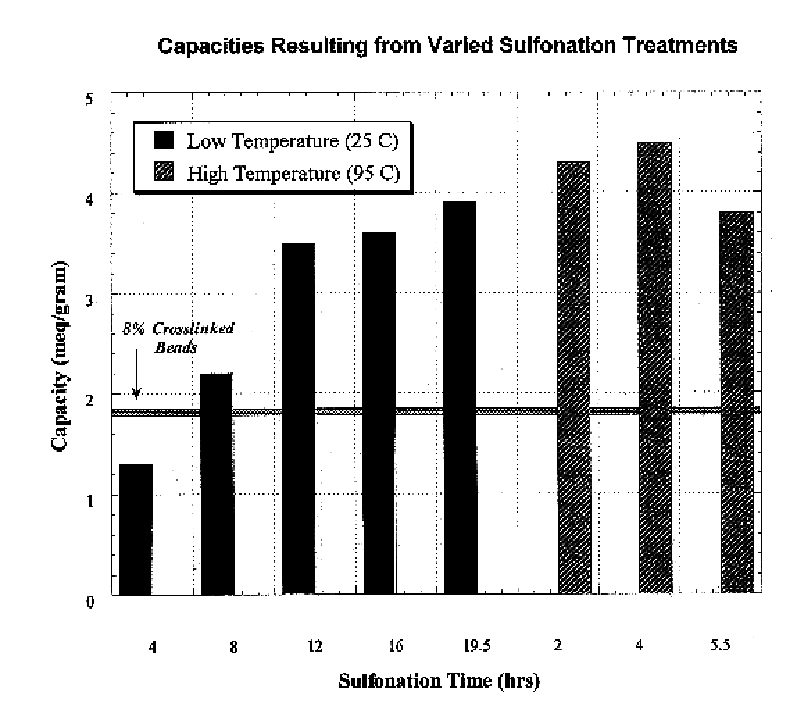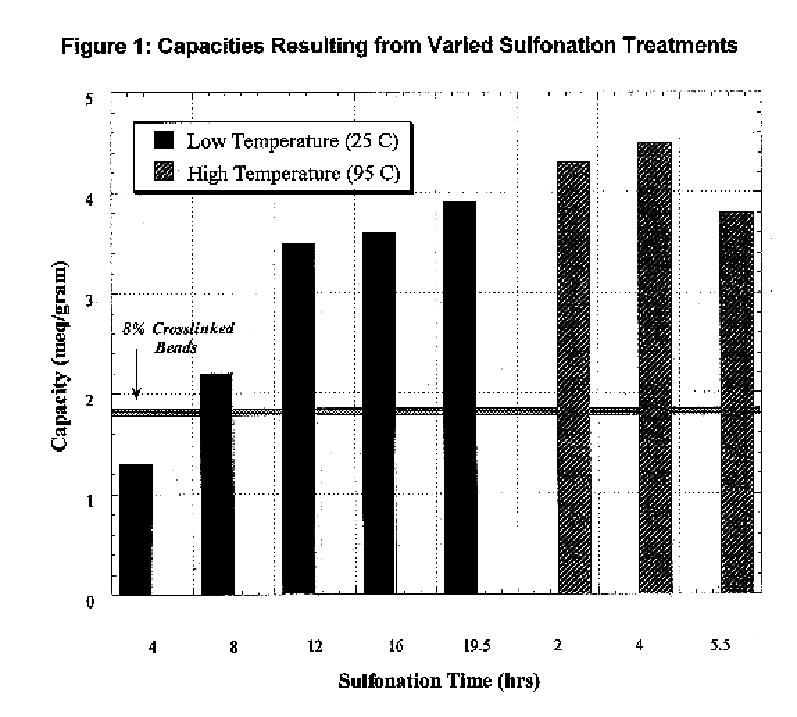Polymeric ion exchange fibers
a technology of polymer ion exchange fibers and ion exchange fibers, which is applied in the direction of cation exchanger materials, separation processes, fibres, etc., can solve the problems of increasing shipping costs, easy fracture and breakage of beads, etc., and achieves the viscosity of the polymerizing mixture and easy control of the thickness of the coating on the fibers
- Summary
- Abstract
- Description
- Claims
- Application Information
AI Technical Summary
Benefits of technology
Problems solved by technology
Method used
Image
Examples
example 2
Polymerization and Activation of Cationic Resin Coated Glass Fibers
I. Polymerization:
Same as Example 1
II. Functionalization:
The resin-coated fibers were treated with 150-ml concentrated sulfuric acid for twelve hours at 25.degree. C. with 1% silver sulfate as a catalyst under stirring. After activation, the samples were treated to a stepped-dilution rinse (50%, 25%, 12%, 6%, and 3% sulfuric acid rinse). Finally, the resin-coated fibers were rinsed with pure de-ionized water until all excess acid had been removed.
example 3
Polymerization and Activation of Cationic Resin Coated Glass Fibers
I. Polymerization:
A copolymer of styrene, 5 wt. % divinylbenzene (80% mixture of m, p isomers and >17% ethylvinylbenzene, and <1% o, m, p diethylbenzene), and benzoyl peroxide initiator were rigorously mixed and heated at 80 to 85.degree. C. for approximately 17 to 24 minutes, or just before the gel point, and subsequently quenched in an ice bath, to form the oligomer. The fiberglass substrate CRANE 230 (6.5 .mu.m fiber diameter) was then coated with the oligomer. The fibers were then turned occasionally to avoid pooling while sitting in air for one hour. The coated glass samples were cured at 85.degree. C. in a Lindberg furnace under nitrogen for 4 hours. Following this procedure, a resin loading of 60-65% by weight is achieved.
II. Functionalization:
Same as Example 1
Example 4
Polymerization and Activation of Cationic Resin Coated Glass Fibers
I. Polymerization:
A copolymer of vinylbenzyl chloride, 8 wt. % divinylbenzen...
example 5
Polymerization and Activation of Cationic Resin Coated Glass Fibers
I. Polymerization:
PUM
| Property | Measurement | Unit |
|---|---|---|
| length | aaaaa | aaaaa |
| diameter | aaaaa | aaaaa |
| aspect ratio | aaaaa | aaaaa |
Abstract
Description
Claims
Application Information
 Login to View More
Login to View More - R&D
- Intellectual Property
- Life Sciences
- Materials
- Tech Scout
- Unparalleled Data Quality
- Higher Quality Content
- 60% Fewer Hallucinations
Browse by: Latest US Patents, China's latest patents, Technical Efficacy Thesaurus, Application Domain, Technology Topic, Popular Technical Reports.
© 2025 PatSnap. All rights reserved.Legal|Privacy policy|Modern Slavery Act Transparency Statement|Sitemap|About US| Contact US: help@patsnap.com



